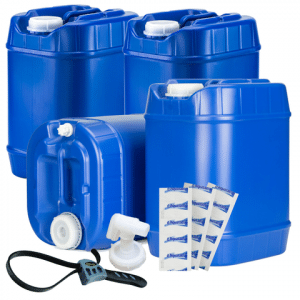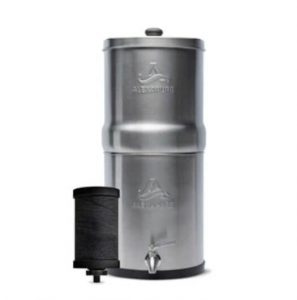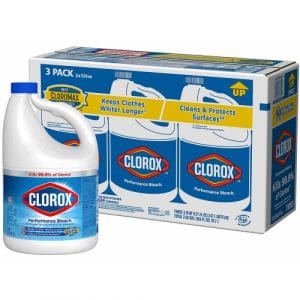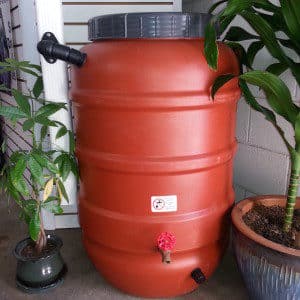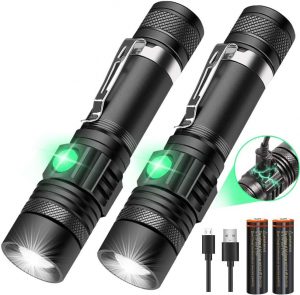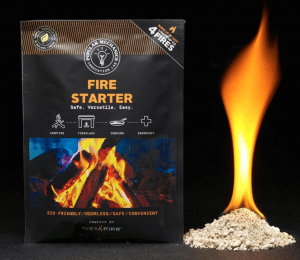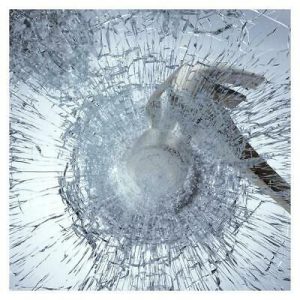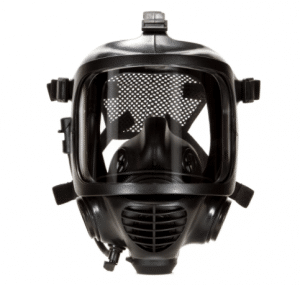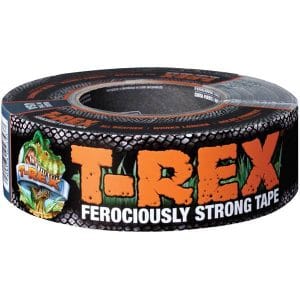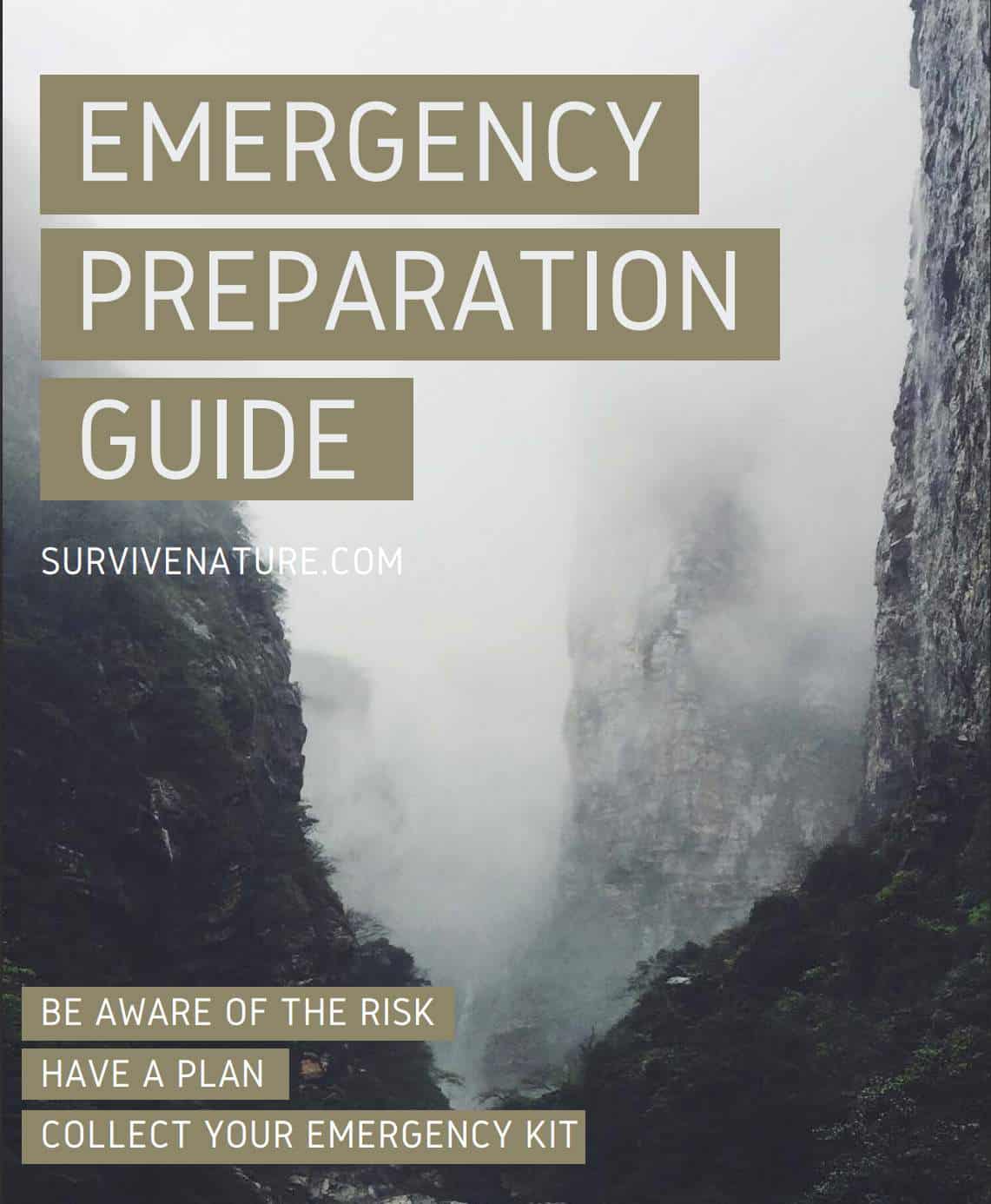If you are an experienced prepper and know all about the preppers list, swipe away. However, most of us aren’t. This is why this article is so important: it will inform you about the inventory, tools, and supplies you surely need to have to survive in the wilderness. You will find out about the advantages of a gas mask, the nutritious characteristics of beans and wheat, and more to ensure your successful survival. Read on and add something new to your own prepper’s check-list.
Some may call it TEOTWAWKI or SHTF. Others call it the End of Days or a whole bunch of different names one can think of. But whatever you choose to call such full-scale disasters or speculate on how likely it is for any of them to happen during your lifetime, one thing you should know for sure since you’re here and reading this post:
- No matter what the future has in store for you, you must be prepared. Those who anticipate even the unexpected will not be taken by surprise. So hope for the best but make sure you have your emergency survival plan at hand.
And that is exactly what our up-to-date preppers list is for!
It includes 80 survival items that will help you stay alive should anything horrible happen in the nearest future.
What makes our survival gear guide special is that it not only lists useful items you should keep at hand but tells you why you will need them. With this list, you will learn about all the necessary stuff one will need to stay alive. Food and water and some of the things that might not come to mind first when speaking about preppers essentials.
We will not just name items and tell you what you will need them for. There is a bunch of useful tips for each of them, as well.
When you have finished our list, you will know everything a 21st-century prepper should know to prepare the best survival stock for future disasters, whatever they may be.
Because, you know, everything can happen. And a good prepper, while hoping for the best, will always have a solid plan for the worst. Our survival items list, as extensive and detailed as it is, will be your go-to checklist for a worst-case scenario – some large-scale, long-term catastrophe that may dramatically change the lives of millions.
2021 has already shown how drastically things can go out of hand. And what’s even more frightening, this may well be only the beginning. So jump into our survival list for preppers to find out everything about the safety and survival equipment you already might be needing tomorrow.
Water
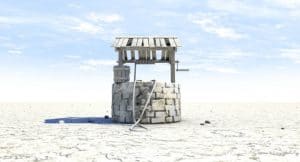
And if any of these should happen, do you have your Plan B to get water for yourself and your family members?
If the water you have access to is contaminated, drinking it may be dangerous for your health and, in some cases, for your life. But what is even worse is not having water at all. This will kill you a lot faster. The human body is in constant need of hydration. Water keeps our bodies going. It is only a matter of a few days before the human body gives in and dies without it.
So to ensure your survival during the first weeks of an SHTF event, you must have your water storage prepared. You are free to decide how large your water storage will be, but one thing a prepper knows for sure – you must stock up water!
Below is the information on what you will need to stock up on water and how to do it right.
1 – Plastic Water Canisters
Convenience and saving up space is crucial for any prepper. And we know that storing water is a challenging task in that matter. So the 5 Gallon Legacy Premium Water Storage System might be just what you’re looking for.
These containers will take up minimum space. They are reliable, stackable, and have built-in handles, which makes them extremely convenient. Each of these is a five-gallon container so that you will have thirty gallons of fresh, clean water with six containers.
But wait, someone may ask, there are 50-gallon food-grade drums out there. So why not get these? A fifty-gallon drum seems undoubtedly better than nothing at all, right? Well, not really. And here’s why.
1) A fifty-gallon drum may be a cause of waste of water. Picture this, while stranded during disaster consequences, you will have to change your previous way of life. Pretty much, it may result in degrading personal hygiene standards. Lots of dirty stuff around that you or anyone from your family touch with bare hands. One day you may neglect your hygiene routine, and there you have it – fifty gallons of contaminated water. You will not want to try if it’s a deadly hazard. You will just want to get rid of it. Get rid of somewhat fifty gallons of water. The water you could be drinking, using to refresh yourself, wash the dishes and such.
Good thing a five-gallon canister is much smaller. If the water in there gets contaminated, you will easily dump it with next to none regrets knowing that you have the rest of the contained water intact.
2) A fifty-gallon drum is over 400 lbs in weight. And we don’t think you will fancy moving it around with the world collapsing and such. While you can easily grab a five-gallon container in each hand using their handle and here you are, ready to bug out.
There is another thing about getting a set of five-gallon containers. The 30-gallon pack of such containers comes with some extra features. You’ll get:
- A cap wrench to keep your containers are tightly sealed;
- Two spigots that will let you fill two canisters at the same time;
- Water Purification Tablets.
Here’s a useful post on how to use these water containers properly. Make sure to check it out.
2 – Water Filtration
Alright, so now you have your water containers and your rainwater barrel. But a qualified prepper’s checklist for long-term drinking water storage goes beyond that. The next thing you have to do is ensure that the water you’re drinking is clean, so you have to purify the drinking water. This is your must, especially in the conditions of a worst-case scenario event.
And if anything of the sort happens, you most likely will not be able to trust natural water sources around you. Rivers, lakes, ponds, and whatnot will be containing hazardous contaminants. To protect yourself and those around you, you need a water filtration system.
One of the best options is the Berkey Water Purifier. It’s not one of the smallest items. This filtration system is not something you will put into your bug out bag. But we’re not talking about bugging out right now. À reliable water filter system is what you’re going to need during a long-term period of surviving disaster aftermaths. And this survival filtering system is just what you need in your emergency preparedness list.
3 – Bottled Bleach
Another way of water purification you might not know about is by using bleach. Small amounts of bleach, when added to water, can destroy hazardous bacteria and viruses.
Bottled bleach is easily stored and is not expensive, which is good because, unfortunately, you will have to renew your bottled bleach storage now and then. The reason is it has a relatively short shelflife. But the good thing is it takes only so little bleach to purify a large volume of water.
Plus, bleach is perfect for cleaning, making it the best option if you’re fond of multi-purpose items.
As far as water purification goes, bottled bleach is in no way a replacement for a solid water filter system because it won’t purify water of chemicals, poisons, oils, or any other serious contaminants. But still, the Performance bottled bleach is definitely something you might want to get for your preppers stock.
4 – System For Rainwater Collection
Stocking up water is a must for every prepper. But water storage is not forever. One day you will run out of it. So you’re going to think of getting another water supply. We will have to bring this up again: a few days without water, and you may well be gone. So water is life. And you have to make sure you will not run out of it.
Rainwater collection is a great way to some extra H20 for yourself and your family.
You will need a large, sturdy rain barrel and a spigot installed at the bottom of it. You can stand the barrel under your roof’s downspout to collect rainwater for anywhere else on the open spot. That’s the quickest of methods.
However, there are various and more complex rainwater collection systems. You will learn more about rainwater harvesting in one of our articles.
But there’s something you should remember:
- If you’ve survived a nuclear attack, the rainwater you’re collecting is a hundred percent sure contaminated. And even more, most likely, you don’t want to weather nuclear attack aftermaths in your home. Our recommendation is to seek a fallout shelter closest to you.
Food

The key difference is that while you will die in just a few days without water, short-term starvation is quite bearable. You can spend weeks without food and still be alive. It really takes quite long to die of starvation. But believe us, that is something you don’t want to go through. So to face even the most terrible disaster, survive it and deal with its aftermaths, you will need to provide yourself a solid food supply.
Read on to find out how to save yourself from starvation and death in a post-apocalyptic future.
5 – DIY Food Storage
We will start with DIY food storage since many people out there choose this method. And to tell you the truth, going DIY takes a lot more time and effort. You will have to plan thoroughly to be sure you’re doing everything right.
First and foremost, you will have to start with a list of foods with the longest shelf life. Make sure you have rice, beans, wheat, and dried pasta on that list. Buy these foods online or visit your local grocery store.
Then you will have to ensure the safest storing conditions for these products. You will have to be sure that you keep them in a cool and dry place. And highly important, your food storage must be vermin-free. You don’t want your food supplies to be spoiled due to inappropriate temperature conditions or get snacked by critters.
Another piece of advice is to use Mylar bags, tightly sealed plastic containers, and oxygen absorbers. Oxygen tends to shorten the products’ shelflife. So to make it longer, you will need to remove oxygen from food bags.
So going DIY is not the easiest of options, as you may have seen. It takes a lot of knowledge and planning.
Another thing you must keep in mind while stocking up food is food rotation. What is it?
Basically, food rotation is a way of managing your food supplies to ensure wise and rational consumption. For example, you have a few jars of peanut butter. What you need is to consume them, starting with the oldest jar. When you have finished the oldest peanut butter jar, go in with the newer one. Do just the same with any other food product with a limited shelf-life. Proper food rotation is required to keep your food supplies up-to-date.
To sum up, DIY is a good way of making an emergency food stockpile without breaking the bank. You just have to mind a lot of details not to make any mistakes.
Or you can try both options: buying pre-packaged meals from a vendor and DIY stockpiling at the same time.
And here’s another idea for you: seed storage. Seeds have a long shelf-life and are extremely useful. You can plant seeds for harvests in your survival garden, so you will always have extra food for you and your family. Seeds are available online and offline, so you might consider checking them out.
6 – Freeze-Dried Food & Canned Meats
1) The easiest way of getting yourself a large amount of stored food is freeze-dried and canned products.
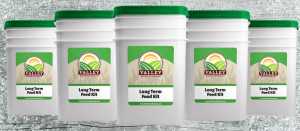
And the most inspiring is that these meals can be stored for up to twenty-five years. So you will not have to worry about the expiration date for your food supplies.
With pre-packaged freeze-dried meals, you don’t need additional spices or whatever to make them tastier as you do with stored rice and cereal.
So it is safe to say that getting your basement stocked with freeze-dried meals is a perfect option for your survival checklist. The only downside is that it can get pretty costly.
2) When making your food supplies list, don’t forget about canned meats.
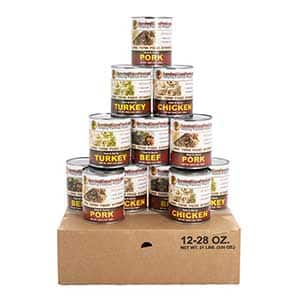
So our recommendation is to get a stockpile of canned meats by Survival Cave. They have a long shelf-life up to twenty-five years and are as delicious. Preppers and campers, as well as regular meat-lovers, have given these survival products fantastic reviews. So, without a shadow of a doubt, canned meats are the best survival food out there. In a world with not a single grocery store in sight, Survival Cave meats are just what will save you from starvation.
However, stocking up on freeze-dried products and canned meat is not the only way to provide yourself with survival food supplies. You may also do it in a DIY fashion.
7 – Fuel Source
If the world as we know it ends, most likely, at least for some period of time, we won’t be able to cook the way we used to – using gas or electricity. And quite often, cooking requires fire. Well, at least you will need to boil water to make yourself a portion of pre-packaged meals or have a cup of post-apocalyptical coffee. So survivalist cooking may get a bit difficult.
Usually, there are two main types of fuel for cooking that come to mind:
Another option is a small camping stove with a fuel canister to operate.
This is a traditional choice for most hikers.
But as good as they get, both kerosene and propane are not the best choices when
it comes to making safe and convenient fuel storage. So the best option here is firewood.
And you will need a lot of it.
And even though firewood needs a lot of space too, the advantages of this type of fuel are obvious:
- It’s safe;
- It’s easy to use;
- It’s available.
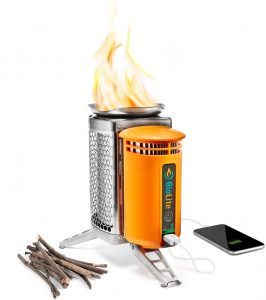
We also advise buying a bio stove. This hiking item will let you boil water easily and fast. Another advantage of a bio stove is that the heat produced from burning generates electricity. So you can power your radio, a set of walkie-talkies, and your battery charger.
If you have enough charcoal, you can cook using a Weber grill or even a Dutch oven in a smokeless fire pit.
But there is another way of cooking that you might find interesting – cooking with a sun oven.
A sun oven incorporates an ancient cooking practice of using solar power. Our idea is that a solar oven is an ultimate must-have for every devoted prepper. While it’s not the cheapest of survival items, but without any doubt, it’s worth every single penny spent on it.
As you may guess, a sun oven requires a fair amount of sunlight to operate properly, but regardless, it works surprisingly well, even on a cloudy day. With enough time and patience, you can even boil some water using it. A perfect solution for survival cooking needs no fuel at all, so finding some free space for fuel storage is no longer an issue.
8 – Multivitamins
In a world after SHTF-event, you know that it’s going to be hard getting vitamins and minerals for your body. So thinking about it beforehand is a good idea. You might want to add daily multivitamins to your survival food checklist.
Having a few packs of these during a post-disaster world is something worth considering. Vitamins are good for your health, and you can always use them for bartering. Your closest neighbors may be less successful and prepared. Someone in their family may be experiencing nutrition problems. So in a pack of multivitamins may well become a hard currency under such circumstances.
Cold Weather Clothing and Warm Items

9 – Extra Clothes
If you live in a cooler climate, extra warm clothes may save your life. Take a look through your wardrobe now and pick some of these:
- Warm flannel shirts;
- Sturdy denim jeans;
- Thick long johns;
- Wool socks (the longer, the better);
- Overalls.
The list could go on and on, but we’re sure that you get the point – prepare as many high-quality warm clothes as possible if you live in cooler regions. But remember that you may have to change location, so don’t prepare more than you can take with you.
Another point is that fashion and style will mean nothing as soon as the everyday world goes for good. So when choosing extra clothes for a worst-case event, pay attention to their overall quality and comfort. Take a look at the survival of clothing items for reference.
10 – Footwear
When choosing footwear for your survival gear, be ready that a pair of high-quality tactical boots will break the bank. But it’s worth it. A pair of cheap footwear will get trashed in no time.
To keep your feet safe, you will want to go for solid, rugged survival boots.
Remember: you don’t want to get slowed down by a sprung ankle, blisters, or bruises. Sore feet will get you nowhere. And all because of bad boots.
11 – Gloves
Your hands need just as much protection. They are your precious tools for survival. If you happen to harm them badly, you most likely will be incapacitated and unable to perform even the simplest of tasks. And that may result in death. Whether we speak of splinters, scraps, cut or cold, you must provide maximum protection for your hands. If you scratch or cut your hand, you may get an infection. With no medical help around or antibiotics in your bug out bag, you may die. If it’s cold and your hands won’t move, you may harm yourself or those around you with a tool or a survival knife. Not to mention the risk of frostbite.
Whatever you do, use survival gloves to protect your hands. And, of course, get a few sets just in case.
12 – Stocking Caps & Face Shields
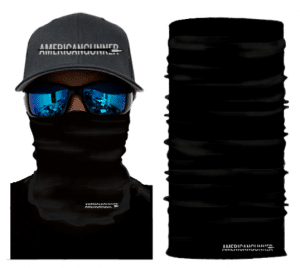
Another piece of advice for those living in a harsher climate. Get yourself a good stocking cap and a face shield. If you happen to get stranded out in the cold, and you most likely will, a stocking cap and a neck gaiter/face shield will keep your head and face unexposed to blizzard.
We would recommend considering to get some of these multi-task face shields by American Gunner.
13 – A Hooded Raincoat
Wiseguys at Princeton once learned that you lose somewhat about 2% of your body heat when you are cold, but should you have your wet clothes on, the body heat loss will increase five times more. Not good.
So be sure you have a durable hooded raincoat in your survival wardrobe. The one that will not tear in an unwelcoming environment and will keep you dry. Raincoats (or rain ponchos) are not expensive and don’t take up a lot of space. And if you have one on you, rain is not a threat.
Remember: being cold is just half the problem. If you are cold and get wet for a long period of time, hypothermia may get you.
14 – Body-Warming Packets
Frostbite can take away your toes or fingers. So these body-warming packets are just what you need to have just in case. They are small and take almost no space, but if you happen to get your fingers or toes frostbitten, these warmers may save your life.
15 – Sewing & Supplies
In a worst-case scenario world, handmade is the trend that will save lives. Many people don’t cherish it today, but when the time comes, they will.
When there are no department stores or tailor shops around, you will not want to throw away your jeans or jacket if they get torn. You will need to know how to patch them up. Get a sewing kit and start learning right away. And don’t you think that tomorrow’s world will be kind enough to let you use your sewing machine. Power supply will most likely vanish, just like stores and shops. So learn to sew by hand.
Unless you are skillful enough to make yourself an off-grid power generator, start learning how to use needles and threads if it’s not your case.
Heat & Warmth

Keeping warm during cold seasons is crucial for a worst-case event with no central heating and power supply. What are the options?
Two of them have already been mentioned. They are propane and kerosene. The choice is a matter of personal taste and preference. Besides, both propane and kerosene have their strong and weak points. More details on this here.
But how to provide heat to your shelter home if you don’t have any of the aforementioned? Or what type of fuel will help you last a longer period of time: 1 month, a season, or several seasons?
16 – Woodstove
Wood stoves are just amazing! They don’t waste too much firewood, but the heat they produce will let you heat your entire home or a survival cabin. Get yourself one and a large pile of firewood to go with it, and you are all set.
17 – Alternative Energy Sources / Traditional Heaters
We have already mentioned off-the-grid energy sources. Among them are solar panels, biogas generators, wind turbines, bicycle, and DIY generators, to name a few. All of them have their strong and weak points, which is subject to personal study.
The key point here is that getting yourself off-the-grid heating and power system is the ultimate game-changer that will make you look differently at your everyday heat and electricity use.
18 – Tact Bivvy
This survival tent is your last option if none of the above works for you for various reasons.
So if you can’t afford to get any of the aforementioned heating devices, or you’re living in a city apartment, and you know that sooner or later you will run out of furniture to burn, get yourself and your family emergency sleeping bags.
Tact Bivvy is not just another regular sleeping bag. Tact Bivvy is designed to trap up to 90% of your body heat. You can also use this sleeping bag with a thinner to improve its performance and stay warm if the weather gets colder.
Our recommendation is to have one of these Bivy sacks at all times with you and use them as additional warming items to a heat source like a woodstove.
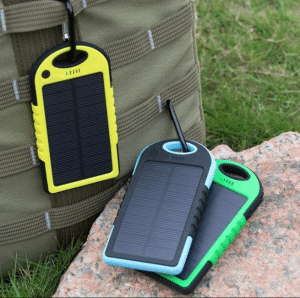
Portable Chargers and Smaller Energy Solutions
In this short section, we will take a look at smaller everyday energy solutions.
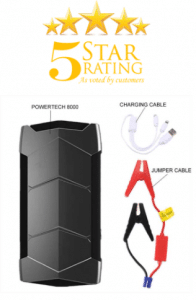
19 – Portable Solar Charger
We are surrounded by tons of useful devices that are completely useless when there’s no electricity. So how to get one when you’re out there in the wilderness or deprived of simple modern-day high-tech pleasures by a widespread disaster?
The answer is a portable solar charger.
Our recommendation is to take a look at the Anytime Charge Power Bank. It’s hugely powerful with its 10,000 mAH battery capacity and will charge two devices simultaneously.
The charger’s design is perfect for harsh outdoor conditions making it a perfect portable charger for camping or survival. It sure deserves its place as a part of your emergency kit.
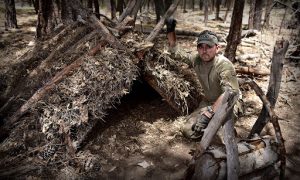
20 – BioLite Stove
Biostove is a perfect example of how modern technologies remind us how amazing it is to be self-reliant. This tidy and modern-looking piece of equipment generates power from the fire you get by burning sticks and smaller tree branches inside it.
You can cook and, say, charge your battery-operated mobile device simultaneously with this Bio Stove. A real must-have for any dedicated prepper!
21 – Rechargeable Batteries
A few sets of rechargeable batteries will be perfect for powering your electronic devices. We highly recommend getting these USB rechargeable batteries that you can recharge with a portable charger of a hand-crank radio.
Add a couple of sets of rechargeable batteries in all the sizes you need for your electronic gear.
Illumination
Having light sources is essential in a post-disaster world. Having none is a sure way to failure. In this section, we will tell you about top illumination devices for survival lists.
22 – Glow Sticks
You can use glow sticks as a multiple-source illuminating tool. They work great if you want to illuminate your room or so an open spot outside your house. The situations are almost countless. You should always remember that the light from glow sticks can attract wild animals or hostile strangers. And these are the encounters you don’t want to have.
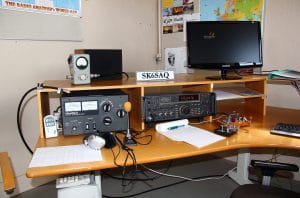
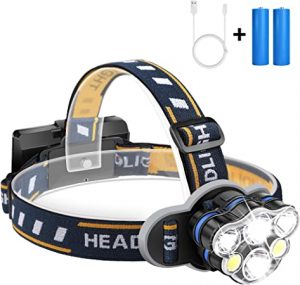
23 – LED Headlamp
A survival headlamp takes the modern-day concept of hands-free devices and gives a survivalist chic to it. When choosing your future survivalist LED headlamp, pick the one with rechargeable batteries. And guess what, you already know what you will use to recharge them.
24 – LED Tactical Flashlight
Illumination devices are hardly ever enough. So as good and useful as a headlamp is, a set of LED tactical flashlights won’t hurt.
Whenever you don’t need your hands free, an LED flashlight is a handy illumination item you can direct anywhere without having to turn your head.
Our recommendation is to get a super light tactical flashlight powered just by a single rechargeable AA battery.
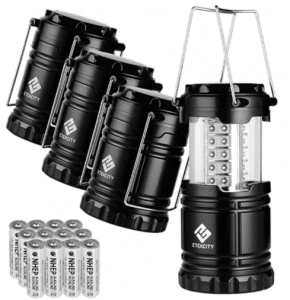
25 – LED Lantern
While headlamps and tactical flashlights are perfect for the outdoors, LED, lanterns are good for illuminating your home.
We recommend buying LED lanterns powered by standard-size rechargeable batteries. It is convenient, and you don’t have to stock up on some unique-type batteries.
Earlier in this article, we have discussed portable chargers and DIY power generators.
Starting a Fire
Do you remember what helped our ancestors make this huge evolutionary leap some two million years ago? That’s right, fire! Later on, fire sculped our whole civilization. And we need fire to stay alive, especially if the world with all its modern conveniences is gone.
Fire is what helps you cook your meals, purify water, keep yourself warm and safe. Nothing is really that bad as long as fire burns.
Below, you will find a few ways to start a fire every prepper in 2021 must know.
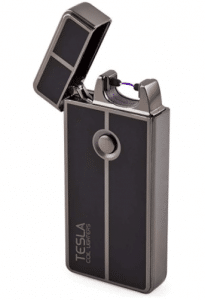
26 – Electric Lighter
If you are looking for a reliable modern-day survival lighter, look no further than a Tesla Rechargeable Coil Lighter.
Its design uses electricity to generate an electric arch resistant to both wind and water. This survival lighter is USB-powered, so you will have to get a portable charger for it. Earlier in this article, we have already mentioned a few of these, such as a solar charger and a BioLite stove to recharge it. Another device that will make for a great survivalist USB-charger is a hand-crank radio.
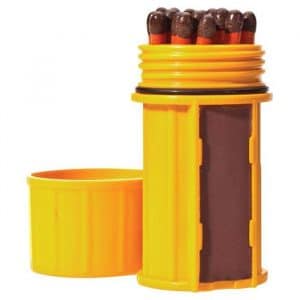
27- Stormproof Matches
When it comes down to fire-starting in harsh conditions, regular matches won’t do. They get wet easily, and you won’t be able to light them. But these Storm Proof Matches are an altogether different story! They will burn even if you get them wet or stomp on them.
Getting the survival matches for your survival kit is a great idea. But unfortunately, they are not forever, and sooner or later, you are bound to run out of them.
28 – Ferro Rod Striker
You might want to think of getting yourself a Ferro Rod Striker. Using a Ferro Rod Striker will help you get the principle behind the fire starting techniques. Just keep in mind that you will need a dehydrated tinder material to make the sparks ignite.
This fire striker is guaranteed to last for at least 3,000 stikes. Although using it requires practice and a certain amount of expertise. But as soon as you get the way with it, a Ferro Rod will become your number one firestarter.
29 – Tinder
For an experienced prepper finding a natural tinder is no problem. At least, you can always start a fire using some old newspapers. But has it ever occurred to you that as the civilization will die, all this everyday paper junk will start to vanish? And that’s the issue that gets often overlooked – it is pretty hard to start a fire without a good tinder material.
So what are the options?
Well, cotton balls seem to work just fine. They are extremely light and take up next no space. To make them even more combustible, you can add some Vaseline. Put it on your emergency list, too.
Another option is the InstaFire Emergency Fire Starter Pack. Those InstaFire pebbles are just great for fire starting. Check them out.
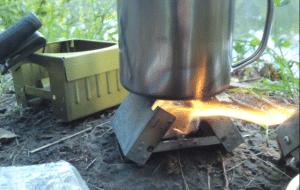
30 – Magnifying Glass
Using a magnifying glass as a firestarter is something every kid does. Sunlight and magnifying glass work perfectly together and, with proper technique, can start a fire in no time.
As a recommendation, consider getting a Fresnel Lens. It’s a credit-card-sized magnifier that makes for a perfect super lightweight fire starter that requires nothing but sunlight.
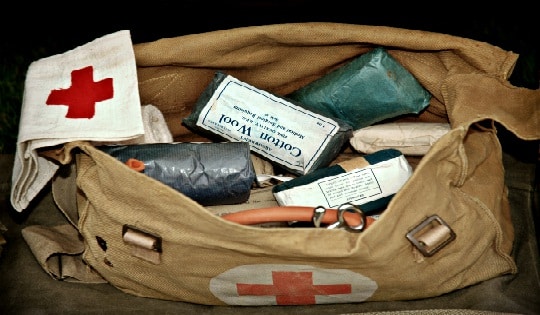
Self Protection
In a post-disaster world, the worst of threats that you may be facing is… humans. There will be many hostile strangers out there who may want to take what’s yours, maybe even killing you in the process. So, getting yourself armed with a self-defense weapon is your top priority. In this section, you will also find information on home protection and the best survival camo gear.
31 – Home Defense Items
Your home is your castle, as the old saying goes. And it’s twice as true when you find yourself amidst a devastated world full of luters, thieves, and other hostiles. You don’t want any of them to break into your home and harm you or someone in your family.
Below are two home defense options you might want to consider to protect your home.
1) A Door Armor by Armor Concepts
The first challenge any trespasser meets when trying to break into someone’s home is doors. And usually, doors will only hold for a while. Door locks get picked. Or even worse, doors themselves get knocked down. To prevent this from happening, you must fortify your doors.
That’s what Armor Concepts’ door armor is for. Door Armor will reinforce the weak points of your house’s doors for a reasonable price. The video below will show you how effective Armor Concepts’ Door Armor is. Check it out!
2) Window Security System
Other weak points in your house are its windows. And if you are seriously concerned with home security, you will definitely want to take care of windows, too.
Security window films are just what you may be looking for. There is a variety of window films to choose from online. So don’t hesitate to check them out.
Among other security solutions are window bars, security screens, and riot glass. But if you want an easy and quick security update for your windows, go for a window security film.

32 – Camouflage
These days people use camouflage for hunting or style. But during the period of widespread disaster aftermaths, camouflage survival gear will become the means of self-defense. Camouflage jackets, pants, waders, and hats will help you mix with the environment and hopefully stay unnoticed. You may also want to go hardcore and get yourself a ghillie suit to make you almost invisible.
33 – Firearms
Choosing the best firearm for survival is not easy. There are tons of articles and books on survival firearms out there. And even more types of guns to choose from.
If you’re planning to stay put during a post-catastrophe period, you are free to collect an entire one-man-army arsenal to protect your home. Just don’t forget to stock up on ammunition as well. Prepare as much as you consider possible.
34 – Ammunition
Every prepper knows how important ammunition is. It’s not only about having enough ammo for your guns and rifles. Ammo will also become a hard currency in the post-disaster world where money or precious metals are no longer n value.
So even if you’re not planning to get yourself a firearm (which is oddly enough, and we recommend reconsidering your decision), get some ammo for your emergency storage. You may need it, at least for trading.
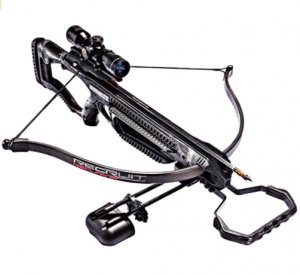
35 – Bow & Arrows
Firearms are good. They are powerful and make you feel safe. But they come with their weak points as well. For instance, ammo is not forever, and eventually, you will be running out of it. And shooting firearms makes a lot of noise. But there’s a silent alternative you can use for years.
A bow is silent compared to guns and rifles, and you will never experience a shortage of arrows. First, they are reusable. Second, in time you can learn to make new arrows yourself.
Survival bows are perfect both for hunting and self-defense. We recommend that every prepper should get a reliable recurve crossbow.
36 – Gas Mask & Filters
We, as living organisms, need food, water, and air to keep us going. At the same time, air is the most important for us. While we may last months without food, a few days without water, the absence of air will get us killed in just three minutes. We must breathe.
Though oxygen will hardly vanish from the Earth’s atmosphere, the air itself can get contaminated during a disaster. And you know that we will have no other option but breathe it. So get yourself and your family, a set of filter gas masks, is a great idea.
As for recommendations, the MIRA Safety website is undoubtedly the first place you should go looking for the best gas masks on the market. For instance, consider getting the CM-6M gas mask and a set of filters to go with it. Thanks to a plastic face shield, this mask provides a wide viewing angle and has a first-class durable design.
Taking Care of Personal Hygiene
A world after a widespread disaster will challenge people in different ways. And one of them is the possibility to perform an everyday hygiene routine. Things like a hot shower will become a luxury when people realize how much energy it takes to heat water and make enough pressure to run it through the pipes. So, as far as personal hygiene goes, survival in a post-disaster world may get quite dirty.
A more affordable option would have baths. Not too often, though. People would have to use cast-iron Dutch ovens hung over a wood stove to heat water. Just like the old days before tap water, central heating, and other modern-day wonders we now take for granted.
In a worst-case scenario, we will realize that staying clean is really no easy matter unless you think beforehand and make all the necessary preparations.
37 – Soap
Soap is a great way of maintaining a decent level of cleanliness regularly. When choosing soap for your supply list, don’t spend too much. Buy just cheap regular bar soap. It would also be useful to learn how to make soap yourself. You may be surprised, but it is not as difficult as it may sound.
38 – Razor Blades
You can use a razor blade in a variety of ways. One of them is shaving unless growing a long beard is what you’ve always dreamed of.
But if you like your chin and cheeks clean-shaved, then you’re going to stockpile a lot of razors. But there are hardcore preppers who use their survival knives for shaving. Are you skillful enough for that?
Women would also like to have their legs shaved. So when packing razors, think about women in your family, too.
However, the sad reality is in a post-disaster world, shaving your face, your legs, or whatever will be the least of your concerns. So shaving is not the only thing you may need razors for.
39 – Oral Hygiene
Teeth issues. As terrible as they get, dental problems will get even worse in a world after an SHTF-event.
Having a fully equipped dentist’s office just around the corner in a post-catastrophe world is quite unlikely. So people will have to take care of their teeth themselves. And the best of options is to start doing it now. You will avoid much of your dental problems tomorrow if you try to do everything to prevent them today. So oral hygiene is crucial.
It may get pretty costly, for sure, but see it as a future investment, as it basically is. Because even if the modern-day civilized world is not going anywhere during your lifetime, at least you will have perfect teeth.
As for other preparations, put down a set of toothbrushes, tons of toothpaste, and dental floss in your end-of-the-world-list.
40 – Female Hygiene
Women should think about getting packs of tampons or a menstrual cup as a reusable alternative or a backup plan for tampons, should they run out of them.
41 – Hand Sanitizer
In a world after a massive disaster, you may not have regular access to tap water, if there will be any in the first place. So in these conditions, a hand sanitizer is a must. Stock up on a bunch of them. Not too large, though, so you could always carry a small bottle of hand sanitizer with you.
Washing your hands before your meal is significant, as anyone knows. And it gets even more important in a situation when hygiene may seem to be not one of the top priorities. But that’s not true. Stomach issues, diarrhea, or dysentery, as its worse case, are all results of hygiene neglect. As bad as they get in today’s world, these health issues will make these health issues a death sentence in a world with no professional medical help.
So even if the world you once knew and loved is gone, keep your hands clean no matter what!
42 – Toilet Paper
Toilet paper is another sanitary item you should not neglect. Of course, you will hardly be able to provide yourself with tons of it to go around for years after the world is gone, but as a short-term solution, some toilet paper stockpile would be nice.
In the long-term period, you will have to come up with something else, though. People don’t usually like to think or talk about it, but each prepper should know how to arrange toilet hygiene. Some small towels will do—just regular ones. And yes, we know how it sounds, but it’s the survivalist method, remember? Small towels can be washed, dried, and reused. Anyway, reusable towels are better than nothing and are always at hand.
First Aid Kits and Medical Supplies
During a long-term emergency period, there may be no professional medical assistance coming. So just as with fire starting, heating and powering your home, cooking, and coping with other day-to-day challenges, you can only rely on yourself and those around you.
And when it comes down to health care, your emergency list must include a first aid kit and other medical equipment. Every prepper knows that even a tiny scratch without proper treatment may result in a deadly infection in a world of no modern-day conveniences.
43 – Antibiotics
One of the most important things that must get into your survival emergency list is survival antibiotics.
Before antibiotics were invented, even a tiny cut could kill. Infections that entered the blood through cuts and scratches became are a deadly threat.
In a post-disaster world, you will need to have antibiotics stockpiled at your shelter. But the problem is getting prescription antibiotics in large amounts is difficult because of every purchase’s medical control. But here’s the tricky part: you can buy antibiotics for fish or birds instead. While not the same as human antibiotics, they are better than nothing at all.
44 – Personal Medications
Some people have chronic conditions that require taking prescribed medications regularly. If you’re unfortunate to have one of these, our strong recommendation is to make your own personal medication stockpile. Get as many of them as you can while there’s still time.
If the pills you take are addictive and they made you heavily dependent on them, take it twice as seriously and stock as many of them as you can. It is our recommendation to come up with a rationing plan for taking your medication.
In a long-term worst-case event, most likely, you won’t find your medication anywhere.
45 – Eyeglasses/Contact Lenses
If you suffer from visual impairment, you might want to have prescription glasses or contact lenses on your checklist. While these items are not, technically speaking, medical supplies, we still think they belong to this section.
Our recommendation is to have a few extra sets of glasses. Nothing fancy. Just a few pairs of sturdy, inexpensive glasses. If you like contact lenses more, then have a stockpile of them, too. But remember that you will need cleaning agents and cases to maintain them.
46 – Painkillers
Headaches, stomach pains, and such can be buggering. Use painkillers against them. If anything serious should happen, painkiller pills may give you a slight relief until help arrives.
We also recommend researching natural painkillers such as wild lettuce and more.
47 – Blood Clotting Sponge
If you or someone in your family happen to get a deep wound, you will have to clot it asap. Use these Quick Clot Sponges for that.
48 – Tourniquet
Hopefully, you will never get to use a medical tourniquet. But anything may happen. And should you treat a serious injury resulting in massive bleeding, you would be glad that you had included a tourniquet on your emergency list.
49 – Wound Gauze Roll
For treating cuts or severe burns, Gauze roll is a perfect solution. It will take up only so little space in your emergency kit.
50 – Any kind of salve (like Neosporin)
Salve is an ointment for treating skin wounds. Many of them are out there, and Neosporin is one of the top picks on the market. Get it for your first aid kit to fight infections.
51 – Vaseline
We have already mentioned Vaseline for its fire-starting abilities. But besides putting it onto cotton balls, you can use it for dry and damaged skin, rashes, or chapped lips.
52 – Super Glue
What do you about Superglue? It is perfect as a duct tape alternative. But that’s all! Superglue may well be used as a medical item for sealing up minor cuts. However, pretty often overlooked, super glue is really an item you can use in various ways. It sure deserves its place in every emergency kit.
53 – Sterile Alcohol Prep Pads
Each fresh wound must get timely proper treatment. Use sterile alcohol wipes to clean wounds and fight hazardous bacteria that may cause infection.
54 – Hydrogen Peroxide
Even the smallest wounds must be cleaned and kept free from bacteria. Have hydrogen peroxide in your emergency kit for this.
55 – Band-Aids
For small cuts and lacerations, use Band-Aids. They will not let an infection develop, keeping open wounds clean and protected.
56 – Mole Skin Pads
Moleskin pads are perfect for blisters. Although you may use Band-Aids for blisters, they tend to fall off when you’re moving. At the same time, moleskin pads will surely stay in place.
57 – Cotton Swabs
As we all know, we should clean our ears regularly. Excess wax can build up in our ears, which may result in infections or hearing issues. And you don’t want any of these in survival. So you can use cotton swabs like Q-tips to clean your ears.
Another use for them is applying salves and other medical liquids. Plus, cotton ends can be used as a tinder source. As you see, these tiny swab sticks are a multi-task must-have for every survivalist.
58 – Surgical Tape
This surgical tape will keep pads, bandages, and gauze together and in place. A bug out bag must-have.
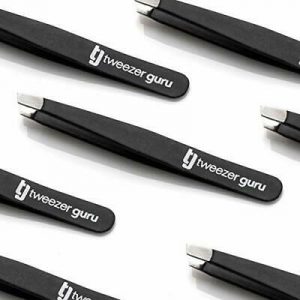
59 – Tweezers and Nail Clippers
Using tweezers and nail clippers is a part of everyday life. And just as in day-to-day life, they are just as useful in a post-catastrophe world.
You can use tweezers for getting slivers. Nail clippers will help you take care of your nails. If your fingernails and toenails grow too long, they will gather dirt under them, and dirt may cause infection. Besides, you can use nail clippers to trim hangnails. They also often cause infection.
60 – Insect Repellents
Insects (like mosquitoes and such) don’t just annoy you. They also may transmit infections. Take care about insect protection beforehand and get yourself a repellent with high amounts of DEET, a repellent ingredient against mosquitos, leeches, ticks, and many other biting insects.
61 – Sun Screen
Excessive sunlight is a threat that you should not take lightly. A bad sunburn may cause sickness and fever. To protect yourself from this, have a pack of sunscreen on your end-of-days list. You may consider this sunscreen as an option. Just don’t fall for marketing tricks like high SPF sunscreens. They are not worth it.
And here’s an extra tip: don’t use your sunscreen too often; most of the time, we recommend wearing long-sleeved clothes and hats for UV skin protection.

Hand Tools
Nothing beats old school hand tools in the world with no electricity. Hammers, shovels, pliers, saws, and such are what every survival fan will need in the world after.
62 – Hammers
Can you imagine a household with not a single claw hammer around? Neither can we. A hammer is a must-have for any household today, and sure, it will be one of the most important tools in the post-disaster world.
Plus, maybe you might want to get some specialty hammers for your toolshed. Such as a rubber mallet, a sledgehammer, or a ball-peen hammer.
63 – Shovels
Survival may require a lot of digging. We won’t go nasty and dark, speaking about digging graves, no. It’s more of an everyday household tasks talk, digging an emergency toilet.
Prepare a couple of sturdy shovels for your emergency toolset. And maybe get some extra two as a backup, because a shovel can break, with its weakest part being the handle.
Just as with hammers, there are some specialty shovels as well. Say, a snow shovel or a small hand trowel may be of good use. You may also consider getting a survival shovel.
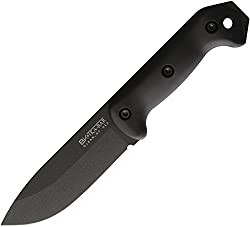
64 – Knives
A solid and reliable survival knife is what all preppers should have on their lists. Read our article on how to choose a survival knife that will meet your needs.
Now, survival knives are not just weapons (more on this a bit later), but first and foremost, they are your everyday multi-task hand tools. There are tons of ways to use a survival knife you should know about.
When buying a survival knife, don’t forget to have a quality knife sharpening tool to go with it. You must keep your survival knife or a survival machete sharp at all times.
65 – Scissors
It is absolutely out of the question: you must have scissors on your survival list. Even though a knife can sometimes replace them, a pair of good scissors will be of good use.
66 – Pliers
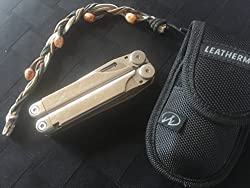
Not a single survivalist toolset can do without reliable pliers.
There is a great variety of tasks for pliers and not fewer kinds of the tool: standard pliers, vice grips, needle nose pliers, money wrenches, you name it. And not to mention static variants like bench vise. It may not technically be pliers, but it bears a similar function of holding items firmly in place.
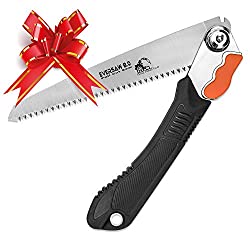
67 – Saws
Should the world become a devastated survivalist playground, saws are the types of hand tools that you will need at all times. There are different kinds of saws like hacksaws, coping saw, two-men saws, or folding saws that most likely come to mind first.
Having and knowing how to use different types of saws will be priceless in the post-disaster world. You may not only create something for your home or fix things around the house but also offer help as a barter.
68 – Hatches & Axes
We have already touched upon the wood and its usefulness when it comes down to cooking and heating your home. But wood is good not only for that. People use it for building.
Turning trees into useful lumber is what a great axe does. Of course, just like with any other hand tool, an ax requires certain skills to handle it. But if you know how to use it, an axe or a hatchet will be your irreplaceable helpers in the survivalist world.
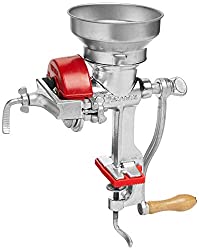
69 – Hand Mill
A hand mill will be handy in a survivalist kitchen. What a hand mill does is grinding wheat into flour with no electricity involved. There is an alternative to a hand mill, though. It is a stone and a pestle. But take our word for this, nothing can replace a hand mill in this matter.
70 – Hand Pump
A hand pump is another household item that may be of great use in a survivalist’s home after the end of the world as we know it. Cars may go out of use pretty quickly, and bicycles will pretty much become primary post-apocalyptic transport. So you may need a good hand pump to pump air into the tires of your bicycle.
71 – Duct Tape & Electrical Tape
1) Duct tape is a universal multi-task item, even in our everyday lives. So it will be almost irreplaceable in the worst-case world. There is a lot of article on different uses for duct tape out there. Check them out
2) If you are not sure why electrical tape is on this list, just check out the variety of tape uses, and you will realize that it’s hard to think of something quite like it.
Communication
No man is an island. And even though you think of yourself as a loner, you still may want to have minimal connection to the outer world. And during a post-disaster period, communication becomes a matter of survival.
The more you know about what’s happening around or what’s coming your way, the more you can get prepared. Weather forecasts, rescue service broadcasts, mayday signals, warnings about potential threats, etc., you may want to have an opportunity to know as much as possible. So getting reliable communication tools on your list is crucial.
No, not cellphones. As soon as the world you knew is gone for good, cellphones become pretty useless. Even if you happen to have a signal booster, there is no guarantee that the whole network will not crash with a few first days or even hours.
You need something that will really qualify for reliaèäó survival communication devices.
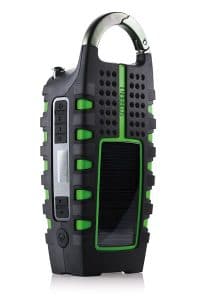
72 – Two-Way Radio Walkie Talkies
Most people tend to gather into survival groups, which is reasonable. And a set of Walkie Talkies is just what every prepper group needs. Walkie Talkies will help stay in touch in case if a group gets separated or plans an ambush. But unfortunately, they work only for short distances.
You can recharge your Walkie Talkies with a solar panel charger, or using a hand-crank radio.
73 – Hand-Crank AM/FM/NOAA Digital Radio
A hand-crank radio is a perfect survivalist communication tool. Its main feature is that it needs no batteries or recharging. Another advantage is that this survival radio can function as a charger itself. So you can not only stay up-to-date with emergency broadcasts but have an opportunity to charge your devices.
74 – Ham Radio Setup
While Walkie Talkies cover short distances, a ham radio setup will let you communicate at longer distances. If communicating worldwide is what you expect from your SHTF-communication setup, look no further than a ham radio set.

Other Survival Tools & Supplies
This final section lists misc survival items you might want to add to your end-of-days list.
75 – Stress Relievers (adults only)
Surviving in a post-disaster world is, without a doubt, heavy stress. You might want to have some alcohol, cigars, and cigarettes on your end-of-days list to cope with nervous strains. You may also stock up on some adult magazines as well. There is nothing shameful about it.
And if you don’t drink or smoke, you may still want to have that stuff at your disposal for trading. After all, vices are always in demand, especially in dark and depressive times like a post-disaster world era.
76 – Books & Games
A worst-case-scenario-world will leave humanity with no TV, radio, or Internet. No social networks, YouTube videos, or favorite podcasts. In these conditions, it will be crucial to provide yourself with as much entertainment as possible. Not only disastrous aftermaths can threaten your life – depression may kill as well.
So run through your list again, and see if there are books you could be rereading, some useful guides on DIY and survival (of course), puzzles, chess, checkers, board and card games, and playing cards.
77 – Paper & Pencils
Having a box or two of paper in your survival storage doesn’t seem to be a bad idea. After all, who knows how valuable paper would get in a post-apocalyptic world? Of course, while stockpiling paper, don’t forget about pencils to go with it.
78 – Precious Metals
As for us, we don’t think that precious metals will be of any value in the long-term event. So gold or silver is not in any way a must-have on your survival list. You can’t eat them. You can’t drink them. You can’t shoot them or even use them as tools.
However, some people think that gold, historically regarded as a universal currency, may still be of good use should the world get back on track after a disaster.
Other than that, we don’t believe that stocking up on gold or silver is a good idea. In the worst-case scenario, it may even make you a target for looters and robbers.
Conclusion
As a wrap-up, we’ll say that your time is now. If you are an experienced self-sufficiency fan, you are already stockpiling lots of the stuff we mentioned here. And if you are new to prepping, our advice is to bookmark this page, print it, make a copy or two and start working out your own prepper checklist.
Go step by step, from the most important items to the less important ones. First come food, water, and medical supplies. Guns and ammo, flashlights, and duct tapes can wait in the early stage.
Good luck, stay safe and remember: catastrophes happen without warning just when you least expect them. So hope for the best and never stop preparing for the worst.
FAQ - Frequently Asked Questions
Every experienced prepper has its survival worst-case checklist to follow. And usually, a prepper’s emergency list depends on the climate, the prepper’s country peculiarities, and personal preferences. But general recommendations for every prepper’s list usually include:
- Meals and water supplies per person;
- First aid kit and other medical supplies;
- Weapons, including knives and firearms;
- Hand tools;
- Illumination items;
- Electrical devices, including radio and walkie talkies.
- A heat source and a DIY power generator.
The best recommendations for a regular person is to stock up on:
- Pre-packaged easy-to-cook meals, including canned meat and products like powdered milk;
- Drinking water;
- Meals and water containers;
- Wear-resistant cast iron cookware;
- Portable chargers, rechargeable batteries, LED flashlights, and lamps;
- Heat sources and electricity generators;
- Tools and weapons;
- Firestarters and, ironically, a fire extinguisher
You might also make a copy of your ID or any other important document.
The list for doomsday preparations can go on and on, really. But if you are not a survivalist geek and just want to know how to get yourself prepared if anything extraordinary happens, here’s our advice:
- Get yourself a bug out bag.
Bug out bags is survival sets that include everything one may need during the first days of a disaster. Usually, people choose to prepare several of them to keep on at home, one at the office, and one in the car. If you have a family, it is best to have a bug out bag per person.
SHTF stands for Shit Hits The Fan. A prepper would use this alliteration to describe a worst-case extraordinary event. An SHTF-situations may include technological catastrophes, nuclear and biological disasters, widespread pandemics, etc. It is safe to say that SHTF is any sort of a large-scale event that dramatically changes the everyday lives of a large number of people for an unknown period of time. Another term for SHTF is TEOTWAWKI (The End of World As We Know It).
Being a prepper usually takes substantial monetary investment. Preppers spend money on pre-packaged meals. Water supplies, tools, firearms, house fortification, and such. But is there a way to become a prepper on a budget? Well, yes.
To prepare yourself for a TEOTWAWKI without breaking a bank, you should just listen to what seasoned preppers say and follow their leads:
- Don’t fall for expensive gear. Most of the best survival equipment is relatively cheap;
- It is ok to buy pre-owned survival equipment. Usually, these items are in next to perfect condition;
- Make up your budget plan and choose priorities. Stick to your budget plan and don’t shy away from using coupons and taking advantage of sales, discounts, and warehouse deals;
- Be able to tell needs from wants;
- Make money from selling unneeded stuff;
- Save money.

